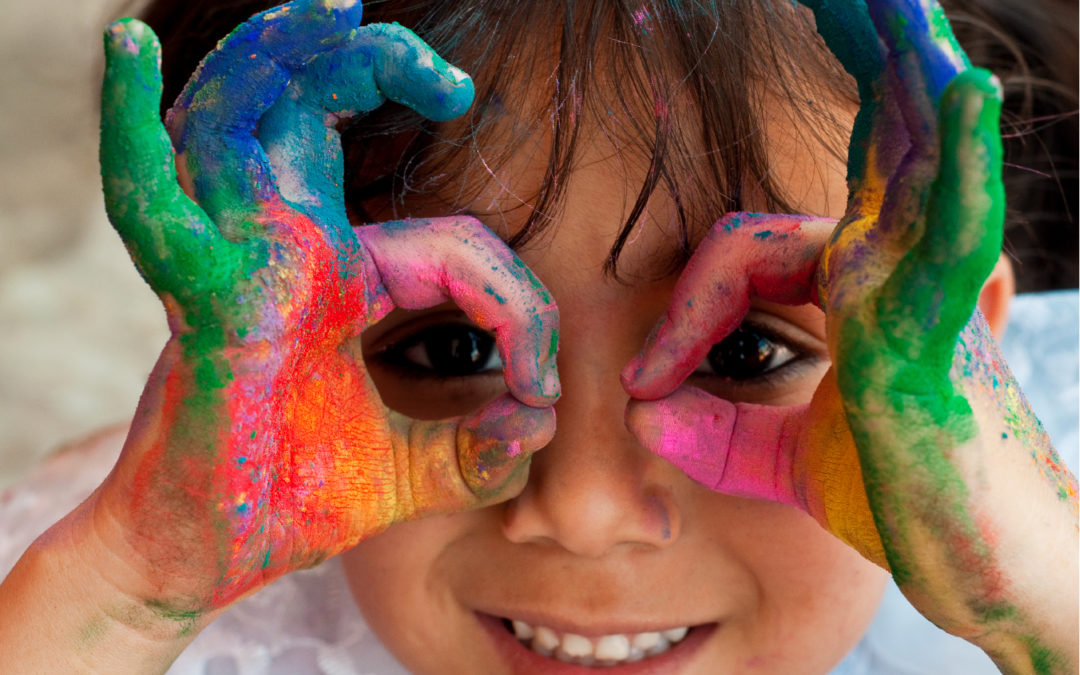In 1938, American philosopher and educator, John Dewey wrote the following quote in his book Experience and Education, “What avail is it to win prescribed amounts of information about geography and history, to win the ability to read and write, if in the process the individual loses his own soul?” Eighty years after Dewey named the disconnect between schooling and joyfulness, joy is still not prioritized in the classroom. At Phoenix Modern, we believe learning should not require giving up joy; Learning should unleash it.
Imagine a child completing a puzzle for the first time. After an extended period of deliberation, frustration and experimentation, do you know what he or she will say and do after placing the final puzzle piece carefully into its position? That child will look up with an expression that is a combination of surprised, excited, and triumphant and shout, “I did it!” That is joy.
Learning is an inherently joyful experience. However, like wonder, the joy for learning must continue to be intentionally fostered. At Phoenix Modern, we aspire to facilitate joy in three distinct ways.
1) A focus on Social and Emotional Learning (SEL): “A school is not a desert of emotions,” write Finnish researchers, Taina Rantalaa and Kaarina Määttä. At Phoenix Modern, we weave social and emotional learning into everything that we do. We utilize several frameworks to help us better understand our children’s SEL developmental needs. We foster community and intimacy by beginning and ending our day in circles. We utilize restorative practices to help children learn from their mistakes. Children who have strong social and emotional support grow into confident and happier adults who can navigate life’s challenges.
2) Emergent, hands-on projects: Rather than utilize strict pacing guides that leave little room for innovation, we utilize an emergent approach when we plan our quests. Because our guides do not spend class time lecturing, they are given more opportunities to interact with and observe children organically throughout the day. They continually document and capture what inspires and brings joy to our children and then weave these topics and experiences together with the content standards in order to develop our quests. Learning is inherently more joyful when children are investigating content that they are already interested in and passionate about.
3) Individualized Core Skills Instruction: If we want to design learning experiences that facilitate joy, we must abandon the myth of averages, which in education looks like students sitting through pre-prescribed lessons in a whole group, at the same pace, on the same day, and in the same manner. At Phoenix Modern, we empower students to set their own learning goals and allow them to progress at a pace that best suits their learning needs. In their journal article, Ten theses of the joy of learning at primary schools, Rantalaa and Määttä, conclude that learning is more joyful when learners are given choice and autonomy.
Joyful learning experiences inspire us to become lifelong learners. In The Neuroscience of Joyful Education, Judy Willis writes, “My own experience as a neurologist and classroom teacher has shown me the benefits of joy in the classroom… When students are engaged and motivated and feel minimal stress, information flows freely through the affective filter in the amygdala and they achieve higher levels of cognition, make connections, and experience “aha” moments. Such learning comes not from quiet classrooms and directed lectures, but from classrooms with an atmosphere of exuberant discovery (Kohn, 2004).” In short – joy is not a “nice to have.” Joy doesn’t just make learning more engaging. Joy makes learning stick.

